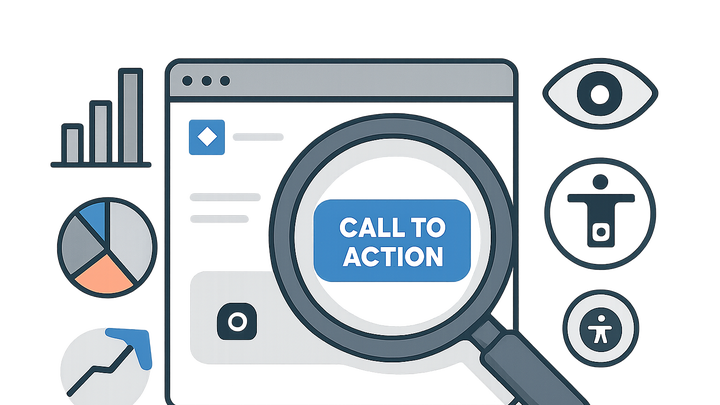Published on 2025-06-29T20:21:47Z
What is a Feature Spotlight? Examples and Best Practices
A Feature Spotlight is an in-depth, focused analysis of a single website element to assess and optimize its performance in conversion rate, user experience, search visibility, and accessibility. This process isolates one feature—such as a call-to-action button, a search bar, or a signup form—to identify usability issues, technical constraints, or SEO opportunities that could be limiting its effectiveness. By zeroing in on one target element, teams can generate actionable insights and prioritized recommendations that yield measurable improvements. Tools like Prevue.me can streamline this effort by providing automated critiques, including real user feedback, heatmaps, accessibility audits, and SEO checks. Ultimately, Feature Spotlights help stakeholders understand the impact of each individual component and drive iterative enhancements that align with business objectives and maximize lead generation.
Feature spotlight
A focused review of a key website element to optimize its UX, SEO, accessibility, and conversion performance.
Why Feature Spotlights Matter
Focusing on a single website feature allows teams to drive faster, measurable improvements without the noise of larger-scale redesigns. It enables targeted experimentation and precise allocation of resources.
-
Targeted conversion gains
Zero in on high-impact elements to quickly test changes and track conversion uplifts.
-
Enhanced user experience
Refinement of one feature improves overall usability, reducing friction in the user journey.
-
Seo and accessibility focus
Ensure each feature meets search engine guidelines and accessibility standards to broaden reach.
Conducting a Feature Spotlight: Step-by-Step
A systematic approach to select, evaluate, and optimize a feature using data-driven insights and industry best practices.
-
Select your feature
Choose a feature based on funnel bottlenecks and business objectives to maximize ROI.
- Conversion rate impact:
Prioritize features that directly influence sign-ups, purchases, or leads.
- User engagement:
Focus on elements with high interaction, like navigation menus or search bars.
- Conversion rate impact:
-
Collect data and insights
Gather quantitative and qualitative feedback to establish a performance baseline.
- Analytics tools:
Use Google Analytics, heatmaps, and session recordings to track interactions.
- User surveys and testing:
Conduct usability tests and surveys to capture real user pain points.
- Accessibility audits:
Run automated checks with prevue.me or WAVE to identify barriers.
- Analytics tools:
-
Analyze and prioritize recommendations
Interpret data to craft actionable improvements ranked by impact and effort.
- Ux enhancements:
Optimize layout, labels, and flows based on user behavior.
- Seo adjustments:
Ensure feature content is semantic, crawlable, and performance-optimized.
- Accessibility remediations:
Address focus order, ARIA attributes, and color contrast issues.
- Ux enhancements:
-
Implement and test
Deploy changes, run A/B tests, and monitor metrics to validate improvements.
- A/b testing:
Experiment with variations to determine the most effective design.
- Continuous monitoring:
Track performance over time to ensure sustained gains.
- A/b testing:
Feature Spotlight Examples Using Prevue.me
Real-world use cases demonstrating how prevue.me’s critiques accelerate optimization cycles.
-
Optimizing a call to action (cta)
prevue.me analyzes button color, copy, placement, and accessibility to boost click-through rates.
-
Improving site search functionality
A deep dive into search algorithms, UI refinements, and internal linking to enhance SEO and UX.
-
Enhancing form accessibility
Recommendations for label associations, error messaging, and keyboard navigation for inclusive design.
Best Practices and Common Pitfalls
Advice to maintain momentum and avoid mistakes in your Feature Spotlight initiatives.
-
Maintain iterative cycles
Implement changes in small batches and continuously refine based on new data.
-
Avoid over-optimization
Balance enhancements to prevent a disjointed user experience.
-
Align with business goals
Ensure that every feature improvement supports overall growth and lead generation objectives.
